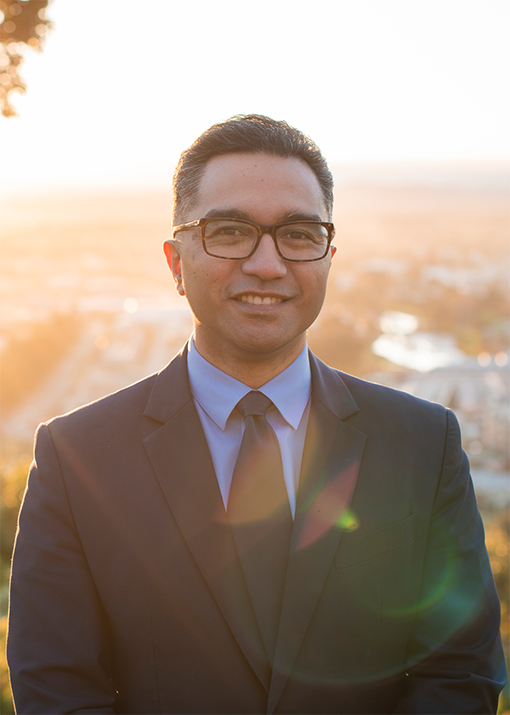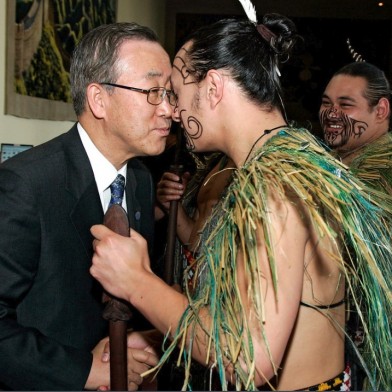After the Sister Cities AGM, Josh Wharehinga got to thinking about New Zealand’s global connectedness again. He reports from Gisborne.

Deputy mayor of the Gisborne District, Josh Wharehinga, is the first Māori deputy mayor of the region | Photo: Asia New Zealand Foundation
As with many relationships in a Covid-affected world, those involved with Sister Cities have had to adapt their means of maintaining connections. The key means of staying connected has been digitally, via email, social media and the likes of Zoom. We are lucky that in our current point in human history we get to maintain contact using all of these fantastic tools. In that regard, we are blessed.
At the Sister Cities conference in Wellington, I had the pleasure of hearing about the relationships towns in Aotearoa New Zealand have with towns overseas and hear about the deep history of some of those connections.
The Gisborne District’s Asian Sister relationships are the Port of Rhizhou in China, the City of Nonoichi in Japan and the Port of Gamagori also in Japan. We export the majority of our logs to Rhizhou and we have wine growers that export their wines to Rhizhou too. With our Japan relationships we have student exchanges, delegations that will visit each other and an annual photo competition.
Speaking at the Sister Cities conference, Asia New Zealand Foundation executive director Simon Draper commented that while the aforementioned digital modes of connection are essential for maintaining already established relationships, we must strive for face-to-face connection again once that is possible.
I couldn’t agree more. As someone who is heavily involved in international relationships it behoves me to grow relationships with my international peers and stakeholders. True growth can only happen when face-to-face connection is part of the relationship strategy in conjunction with the other tools that are available to us.
Face to face is so important, particularly in an Asia/Māori context. It was due to these similarities and my inherent Māori understanding of kanohi ki te kanohi (face-to-face) being important, that in 2019 I chose to with our Japanese Sister Port and Sister City in the hopes of reigniting the relationship between the Gisborne District and our Japanese connections.
I was already heading to Japan to participate in the Asia New Zealand Foundation Japan hui, however prior to the hui starting I went to see our Japanese Sister City Nonoichi and our Japanese Sister Port Gamagori. There were three points of connection I knew my Japanese colleagues and I could share common ground on, kanohi kitea, koha and kai.
Kanohi kitea literally means ‘seen face’. A cultural norm that values being present. Koha is commonly referred to as a gift. We often use the word ‘koha’ to mean ‘the token of appreciation we will give a person’. However, koha in its truest sense is about reciprocity. If we really think about the reciprocal nature of relationships and apply that to our thinking when we give a koha then it elevates the meaning to be more than a token of appreciation and gives it value on a relationship level.
I challenge you to reflect on koha you have given in the past and whether it met your own values of true reciprocity. We all know what kai is, food. Food is a great lubricant of social interaction. It has a status of taking things from tapu to noa, sacred to common, or formal to informal. However food wasn’t the only kai.
In Te Ao Māori there is a saying ‘Ko te kai a te rangatira, he kōrero’ The food of the chiefs is words. To be honest, I was very nervous. Particularly for the relationship with Nonoichi as it is one of our longest relationships and had been very active. I wasn’t sure how I was going to be received because no elected person from my district had visited in a while therefore I knew I had some making up to do.
I was fulfilling the first point, kanohi kitea, by being there in person. The spirit of true reciprocity led me to overcompensate on koha. I took so many gifts! Multiple gifts for the municipality, multiple gifts for the mayor and even a gift for his wife. I presented them all one at a time too, to ensure everyone in the room understood the level of importance the relationship was to my region. Suffice to say it went down well enough that we had much kai and kōrero later on that evening.
As a result, Nonoichi visited the Gisborne District for the sestercentennial commemorations at the end of 2019 as a guest of our district. We in turn planned to attend an important Nonoichi city celebration in Oct 2020 to mark the 30-year anniversary of our relationship.
Obviously the trip in Oct 2020 didn’t happen due to Covid, however, the revitilisation of the relationship would not have been possible without kanohi ki te kanohi, face to face connection. And a lot of koha.
In 2022 and beyond, face-to-face connections is one of the very real reasons to actively encourage safely engaging back into international travel: of course, in conjunction with all the health and safety protocols in country and out.
If (as a human race) we continue to strengthen our international health security, with vaccination roll outs, better health infrastructure, continued promotion of the social acceptance of mask wearing, isolating when sick, and working from home, then this will help our countries maintain the security and confidence of our face-to-face relationships. This only helps grow our international trade, sport, culture and education relationships.
- Asia Media Centre

